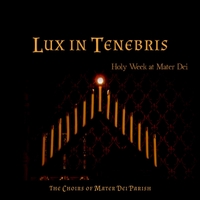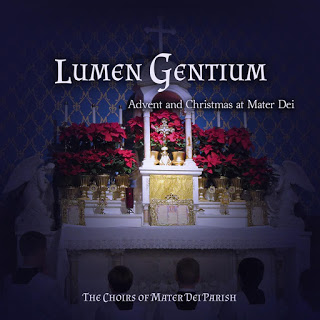I have begun reading The Ways of Mental Prayer by Dom Vitalis Lehodey. Dom Vitalis sent a copy of this work to Pope St. Pius X, who, in 1908, acknowledged receipt of it and remarked that it was “… a work very useful, not only to religious, but to all who, in any walk of life, are striving after christian perfection.”
As one not particularly adept at mental prayer, I took up this book in order to learn and improve. I did not intend to make any particular connections or to write an article about it. Yet in reading one particular passage, it struck me that what we have received after Vatican II promotes an idea of active participation that is very different from what Dom Vitalis describes.
Spiritual Ardor or Keeping Liturgy Interesting
Let us consider the particular passage that struck me from The Ways of Mental Prayer:
Mental prayer is, in fact, the soul of the contemplative life. It is this exercise, which fertilizes, animates and renders ten times more efficacious all our other means of attaining to union with God. Without this, the Divine Office, which occupies so considerable a portion of our day, and in which the same expressions so continually recur, would run some risk of producing a mere system of routine, distracting thoughts, disgust and weariness; but, when once the fire of meditation has inflamed the heart, the holy liturgy is no longer a dead letter, it speaks to our mind and heart, and everything in us sings the praises of God. So, likewise, without the hunger after God derived from mental prayer, spiritual reading is frigid and almost unfruitful; with it, spiritual books move us and not merely shed their light upon the intellect, but make it penetrate even to the depths of the heart and of the will. Nothing is more powerful than the Holy Sacrifice and the Sacraments; yet even they never produce so much fruit as when fervent prayer has thrown the doors of the soul wide open to the effusions of grace.
The Ways of Mental Prayer
Dom Vitalis is writing about monastic life, hence he uses the example of the recitation of the Divine Office. Admitting the realities of aridity and the human tendency to treat the recitation of prayers in a mechanical way, he points to mental prayer as the remedy. We can apply the same principle to active participation at Mass, turning to mental prayer to help us keep the flame of ardor alive in our hearts. If, instead, we are compelled to invoke all manner of innovations to keep the Mass “interesting” then we really do not understand the Mass, or at least we do not understand how to inflame our hearts with the love of God. When we begin to look for ways to entertain ourselves, we no longer treat the Mass as a prayer; instead, we lose sight of what the liturgy actually is.
Vatican II and Active Participation
If Dom Vitalis is correct, shouldn’t the post-conciliar efforts to reinvigorate the liturgy and energize the faithful have focused on mental prayer and on understanding the sacrificial and prayerful nature of the Mass? Shouldn’t the post-conciliar liturgy emphasize the actions of Christ in the Mass and the means through which we faithful may unite ourselves thereto. Yet how often do we hear priests preach on mental prayer these days? How often do they preach on the Mass itself or on the virtue of religion in the liturgy?
Instead of teaching the faithful how better to unite themselves to the Mass in prayer, the present emphasis is on all manner of external actions for the faithful to undertake: becoming lectors or extraordinary ministers of Holy Communion, bringing forward the gifts, holding hands, being a faith community, embracing popular culture in liturgy, and so on. (De-emphasized, ironically, are those external elements that would tend towards prayer. I am thinking of such things as incense, beautiful architecture, statues, etc.)
In the name of improving the active participation of the faithful in the liturgy, what we have been given are radically changed liturgical expressions. The consequences have been devastating. Decline in belief in the True Presence of Jesus in the Eucharist, and the general manner in which Catholics accept the deviant sexual practices of the culture point to a watering down of belief, not to a new springtime of active liturgical participation that enlivens the heart towards virtue and truth.
Mental Prayer and Active Participation
If mental prayer has the efficacy Dom Vitalis proposes, then mental prayer would be like the bellows that fan the flames of our hearts. Would Dom Vitalis, then, have us exercise mental prayer during the liturgy itself? I do not think this is primarily what Dom Vitalis would have us do. For just as one does not engage in mental prayer (under usual circumstances) during the Divine Office when many are speaking or even singing, so too, would it be with the Mass. Rather, mental prayer done regularly at other times during our day or week dispose us to pray the common prayers of the Church with greater fervor. Nevertheless, I would propose that the practice of mental prayer makes it easier for the faithful to raise their hearts to God during Mass and turn that activity into a sort of mental prayer itself.
I posit that it is time for us to return again to mental prayer and to the extraordinary form of the Mass. I am convinced that, only then, will we realize the elusive “active participation” the council desired for the faithful. How can we describe the experiment of the last 60 years as anything but an unmitigated disaster? This liturgical experiment should never have been attempted, for it is an experiment with immortal souls as test subjects.
The Church Following Her Divine Lord
The liturgical situation reminds me of the stripping of Jesus before his scourging. In diluting its liturgy, the grandeur of the Church’s raiment is cast off. Many of our church buildings do not look like churches. Altars frequently look like glorified tables, pulled away from the wall in the manner of the pagans of old. Jesus in the Blessed Sacrament reposes in some dark corner. Ugliness has replaced beauty. Irreverence is the new reverence. In short, in some places, there is no comeliness in the liturgy that we should be desirous of the Church. (Isaiah 53:2)
The Church has lost esteem in other ways as well. The homosexual priest scandal has blackened the priesthood. Good priests are scorned, despised on account of their wayward brothers. More and more, the Church looks less and less beautiful.
I note that, in these weeks of COVID, the Church, in the persons of the lay faithful, has become hidden and despised. A sort of pillar has bound the faithful, unable even to approach the Sacraments for a time. Bishops tied the hands of priests who, otherwise, would have continued supplying the sacraments.
Who has done this to the Church? Let us ask Pontius Pilate. “Thy own nation, and the chief priests, have delivered thee up to me.” (excerpt John 18:35).
About the Featured Image
The featured image is The Flagellation of Our Lord Jesus Christ by William-Adolphe Bouguereau. It is in the public domain in the United States according to Wikimedia.
Note
This article was updated on 2022-01-02 to remove some of the emotion in the original article.




